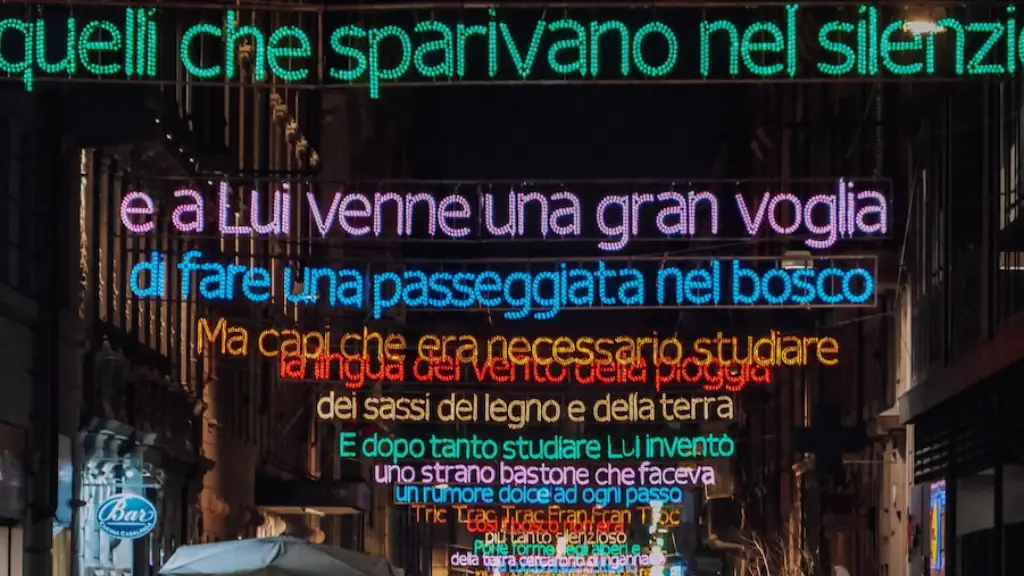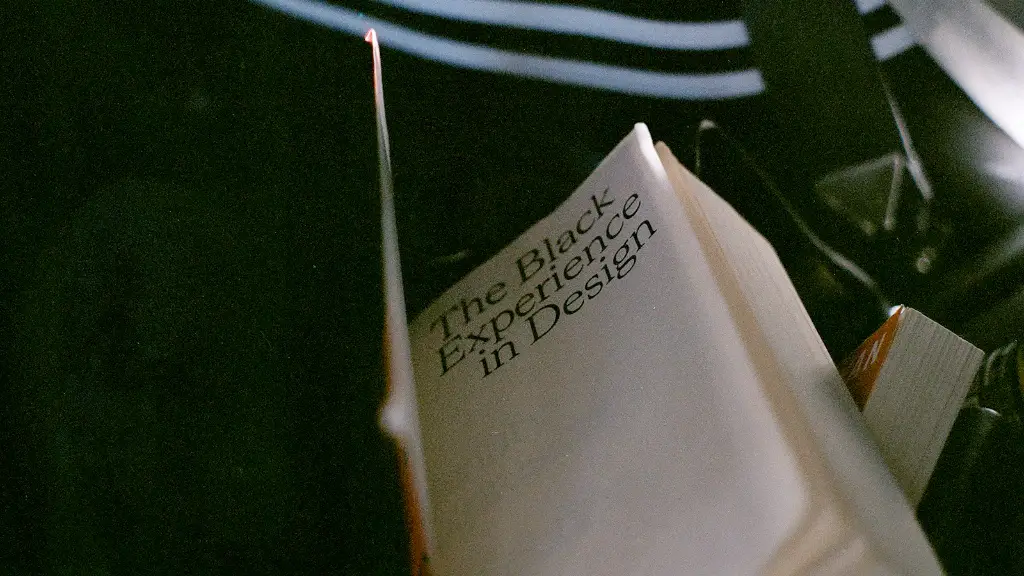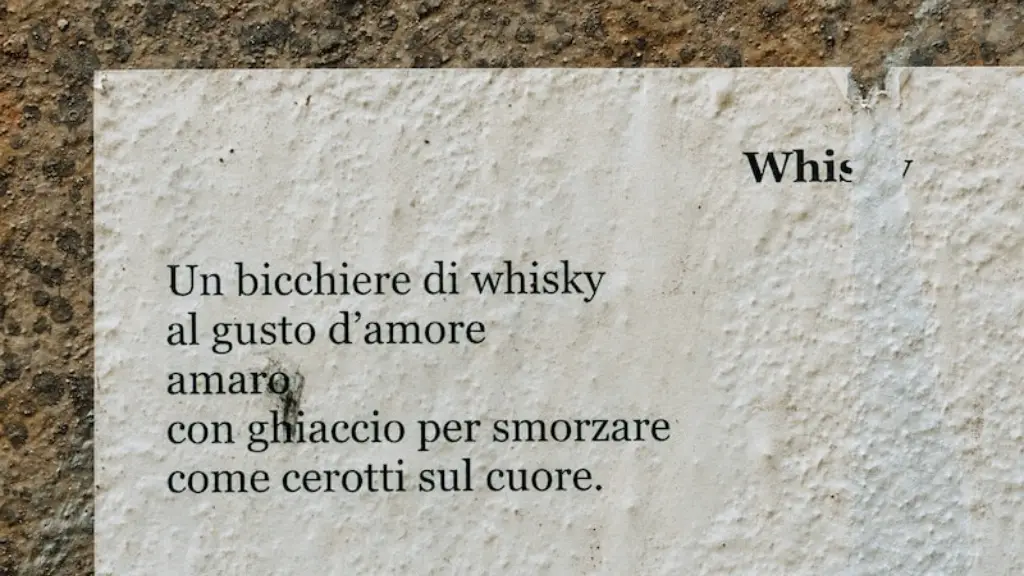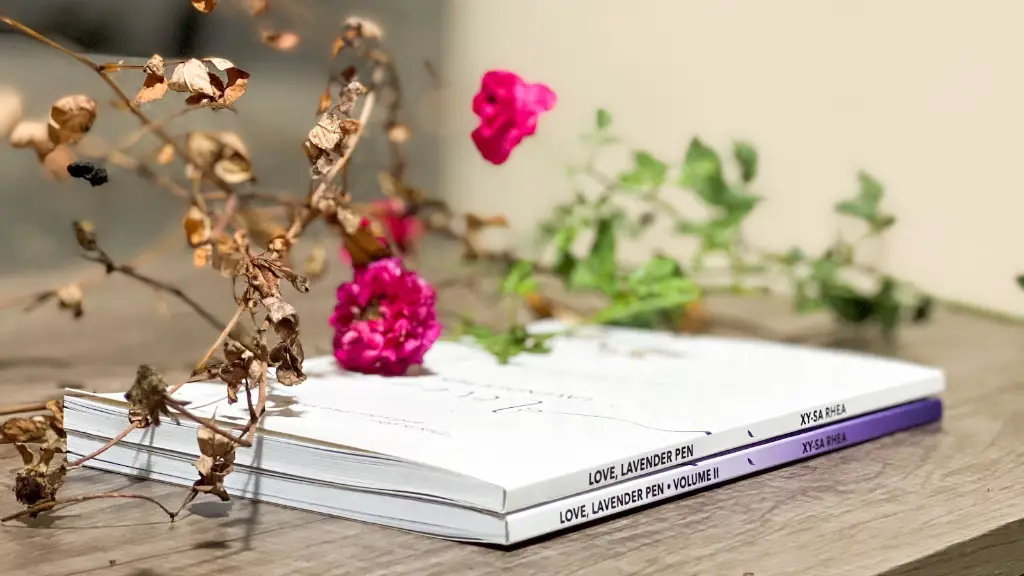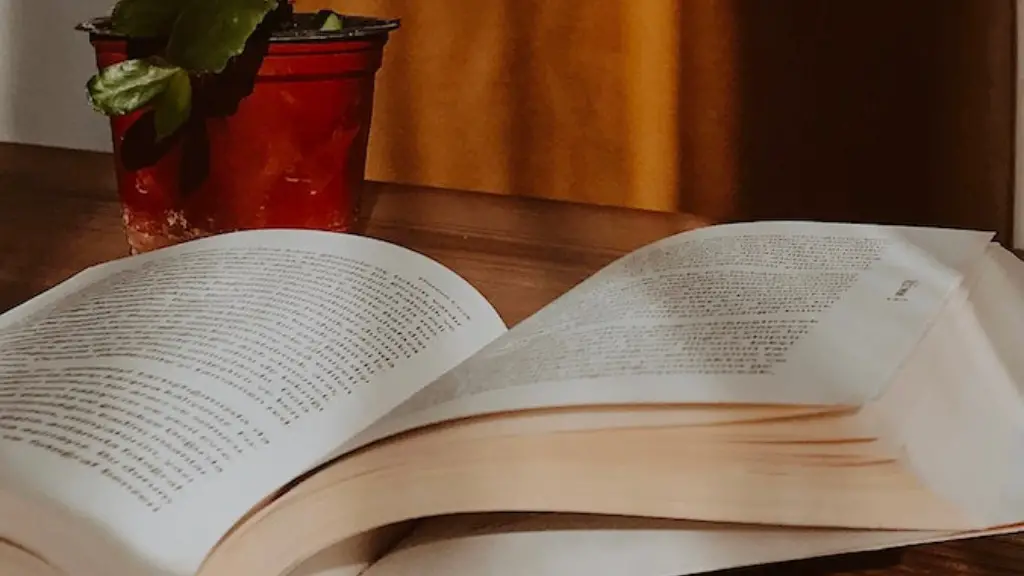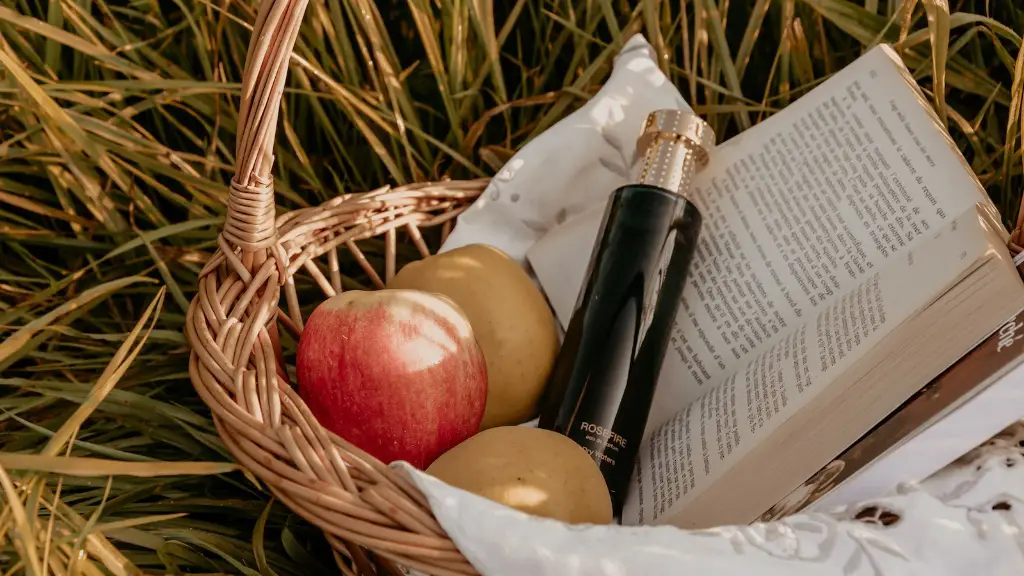What is the Aim of Imagery in Poetry?
Imagery is the use of powerful and evocative words and phrases to evoke a sensory experience. It has long been one of the principal tools used by poets to render their work expressive and meaningful. Imagery can be used to evoke an emotional connection or to give a reader insight into the poet’s intentions and beliefs. By invoking imagery, a poet can transcend language and draw out the reader’s imagination. The aim of imagery in poetry is to enhance the poem’s content and meaning.
When chosen wisely, imagery can add layers of nuance and richness to a poem’s meaning, granting complexity and depth to a poem’s structure and its emotional implications. Visually gorgeous images and symbols are used to paint a vivid picture that can stir up powerful feelings within the reader. Through effective imagery, readers can connect to the sensitive fears and desires of the poem’s protagonist, or they can identify with the poet’s political beliefs and views. In this way, the use of imagery can help to forge a bond between the audience and the authors.
Poets are able to manipulate the reader’s imagination through the use of vivid descriptions, metaphors and similes. An effective use of imagery can stimulate readers’ imaginations and take them to places they have never been before. It can open up realms of possibility and emotion by granting access to worlds of the unknown. It can transport the reader to a new time and place, or it can make the familiar unfamiliar. In either case, imagery can create a feeling of being in the very middle of an experience.
Imagery can be used to create a sense of belonging, providing a sense of comfort through familiarity. Through the use of shared concepts, ideas and symbols, a poem can evoke feelings of connection and belonging. This can be particularly useful when dealing with a sensitive or complex topic, as it allows the reader to explore difficult issues from a place of understanding and empathy.
Another important use of imagery is to bridge the gap between the poem’s protagonist and the reader, allowing for a greater understanding of the protagonist’s feelings, thoughts and experiences. For example, in a war poem, imagery can help the reader understand the sufferings and struggles of the soldiers, bridging the gap between their reality and their own. By bringing closer these distant subjects, images can help the reader empathize and gain an understanding of the poem’s subject.
Imagery can also be used to stimulate the reader’s senses, enabling them to feel and taste, to hear and to touch. Using sensory descriptions and metaphors, readers are able to gain a deeper understanding of the poem. This can help the reader to bridge the divide between the present and the past, to comprehend the experiences of different cultures, to access the inscrutable depths of the human psyche, or simply to enjoy the beauty of simple everyday things.
Ultimately, imagery can help to create a strong emotional bond between the reader and the poem. It can provide the reader with a richer understanding and connection to the events and emotions described in the poem. By evoking strong visual and sensory impressions, images can evoke powerful emotions and associations, granting access to the deeper resonance of the poem.
Small Poetry and Imagery
Imagery in small poetry often serves a similar purpose as that of the longer works. Imagery can help create a unique atmosphere and tone, to communicate a message or communicate emotion. Smaller works can benefit from the use of imagery as it is often more difficult to communicate complex ideas and feelings in fewer words. By constructing vivid scenes and images, poets may be able to convey meaning and gain a connection with the reader that would not have been achieved in any other way.
Although there are fewer words available in short works, poets can use the same techniques as in longer works to invoke imagery. Appropriate use of alliteration, simile and metaphor can help create an evocative atmosphere, whilst specific word choices lend to the suggestive, emotive atmosphere of the piece. Through precise diction, poets can guide the reader’s imagination and engage them with their work.
Metaphors and similes can help make abstract ideas more concrete, allowing the reader to wrap their head around them more easily. By using vivid imagery, poets can draw the reader directly into the world they are creating and evoke powerful emotions. As in longer works, imagery can also help create a sense of belonging and foster understanding between the writer and the reader.
Imagery in Contemporary Poetry
Today, the use of imagery in poetry is wide-ranging. It has increasingly become the tool that poets use to create effective and meaningful connections with their readers. In contemporary poetry, imagery is used to paint vivid pictures, express profound feelings and explore complex topics. From the abstract to the concrete, imagery can help poets explore their own thoughts, emotions and life experiences, from both a personal and a collective perspective.
Modern poets are increasingly incorporating imagery into their work as a means of creating a visual and sensory experience. Through the incorporation of vivid imagery, they can evoke strong emotions and transport readers to a world hidden within their words. Contemporary poets are also using imagery to comment on the world around them and the changing nature of life. By using symbols to communicate their transcendental thoughts, ideas and feelings, modern poets are challenging traditional norms and creating works that are both visually stimulating and emotionally captivating.
Modern poets often use images from the natural world to evoke feelings or to create powerful connections. By exploring universal symbols and concepts, they can establish an emotional connection with the audience. This can serve to remind the reader of the common humanity shared between them, and to help them connect with the poet’s own struggles, triumphs and emotions.
Conveying Meaning with Imagery in Poetry
The use of imagery can help a poet convey meaning in a more effective and efficient way. By using figurative language, a poet can express complex ideas and feelings in their writing. Imagery can make abstract concepts more tangible, stimulating deeper understanding and engagement between reader and author. Images can also be used to convey subtle emotions and change one’s perspective.
Strong imagery can also help a poet to communicate a deeper meaning in their work. Using powerful images and symbols, a poet can communicate their intentions, beliefs and feelings. Through imagery, a poet can communicate a sense of urgency and importance to their message and can make the reader pay attention to details. By creating a strong sense of place and atmosphere in their work, poets can heighten the intensity of their words and help to deliver their meaning even more effectively.
Negative imagery can also be used to great effect. Through the use of images of loneliness, darkness and despair, a poet can create an intense atmosphere and convey uncomfortable sentiments, which can evoke powerful emotions in the reader. Alternatively, positive imagery can also be used to communicate hope, beauty and joy.
The Power of Imagery in Poetry
The power of imagery in poetry lies in its ability to grant the reader access to the depths of the poet’s soul. Through the use of imagery, the poet can express their innermost thoughts and feelings in a way that language alone cannot. In this way, imagers help to convey the poet’s innermost self, forging a connection between the poet, the poem and the reader.
Using imagery can also help to create a unique universe. Through the incorporation of strong images and symbols, a poet can bring to life fantastical or futuristic worlds, or recreate ancient and familiar archetypes in a new way. As a result, imagery can help the reader to access far off worlds, experiences and emotions, taking them on a journey and showing them the richness of that world.
Imagery can also be used to create a unique atmosphere. Depending on the mood and topic of the poem, the poet may wish to create a harsh and gritty environment, or to create a warm and inviting one. Through the use of colour, light and sound in their word choice and images, the poet can create whatever atmosphere they feel is necessary to fully express their sentiment.
Symbolism and Imagery in Poetry
Symbols can be incredibly powerful when used in conjunction with imagery in poetry. Symbols can be used to attach multiple and varied meanings to images, deepening the richness and complexity of the poem. Through the use of symbolic images, the poet can communicate events, feelings and abstract principles in a tangible way.
Symbols can also be used to help create an abstract sense of connection between the poem and its subject. Symbols and symbols from different cultures can be used to communicate a shared experience and understanding and to lend a greater depth and understanding to the poem. Through the use of symbols, a poet can explore the potency of universal ideas and emotions.
Imagery and symbolism can work hand-in-hand to evoke strong emotions from a reader. Through the use of powerful images and symbols, a poet can explore deep-seated fears and desires, as well as shared experiences and universal themes. It is these elements that can truly bring a poem to life, conveying powerful emotions and connecting the poet and reader in an intimate and profound way.
Using Imagery to Stimulate the Reader
Using imagery in poetry is a great way of stimulating the reader’s imagination. By using vivid descriptions, metaphors and sensory language, poets can draw their readers directly into the world they have created. Through the exploration of different forms of perception, imagery can help to expand the reader’s understanding and challenge their preconceptions.
The use of imagery can also provide a powerful means of inciting a reaction from the reader. By creating intense and powerful scenes, a poet can encourage the reader to think about different issues, to empathize with certain characters or to reflect on certain beliefs. Through the use of imagery, a poet can ensure that their poems are felt, not just read.
In conclusion, imagery is an essential tool for poets aiming to convey powerful and meaningful messages. Through the use of imagery, poets can express complex emotions, explore different meanings and stimulate the reader’s imagination. By incorporating imagery into their work, poets of all kinds can add layers of nuance to their writing, compelling the reader to engage with their work on a deeper, more emotional level.
